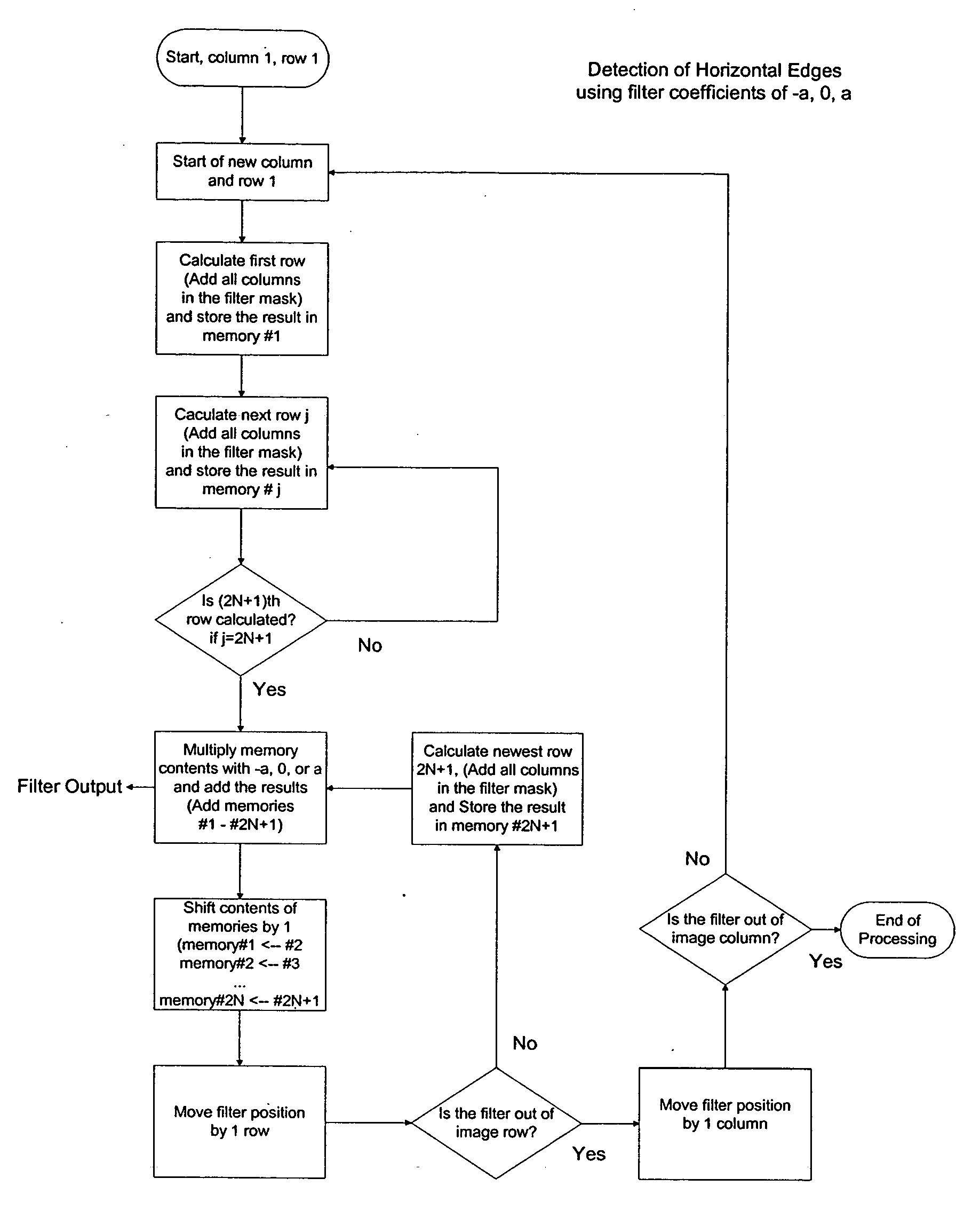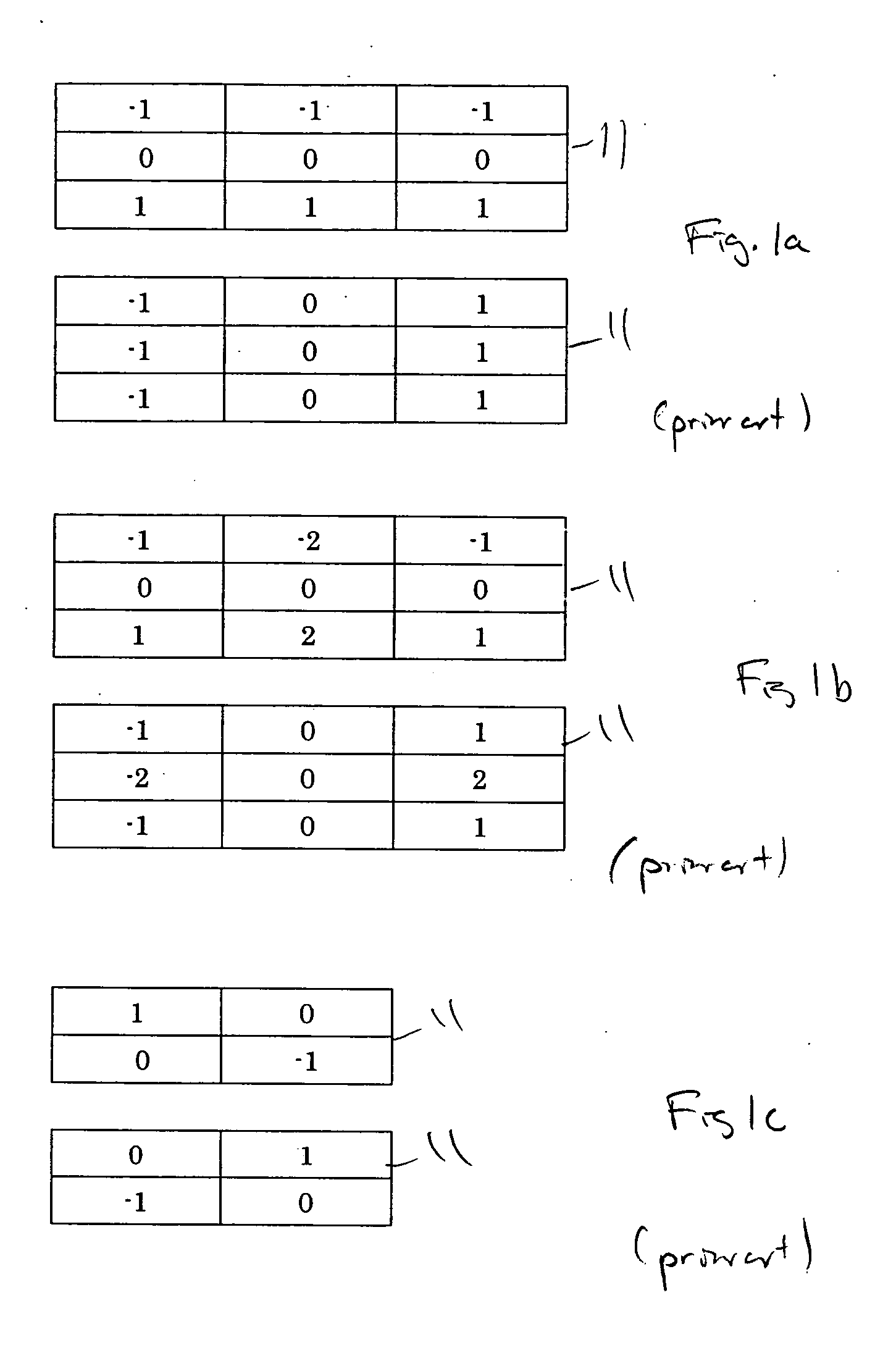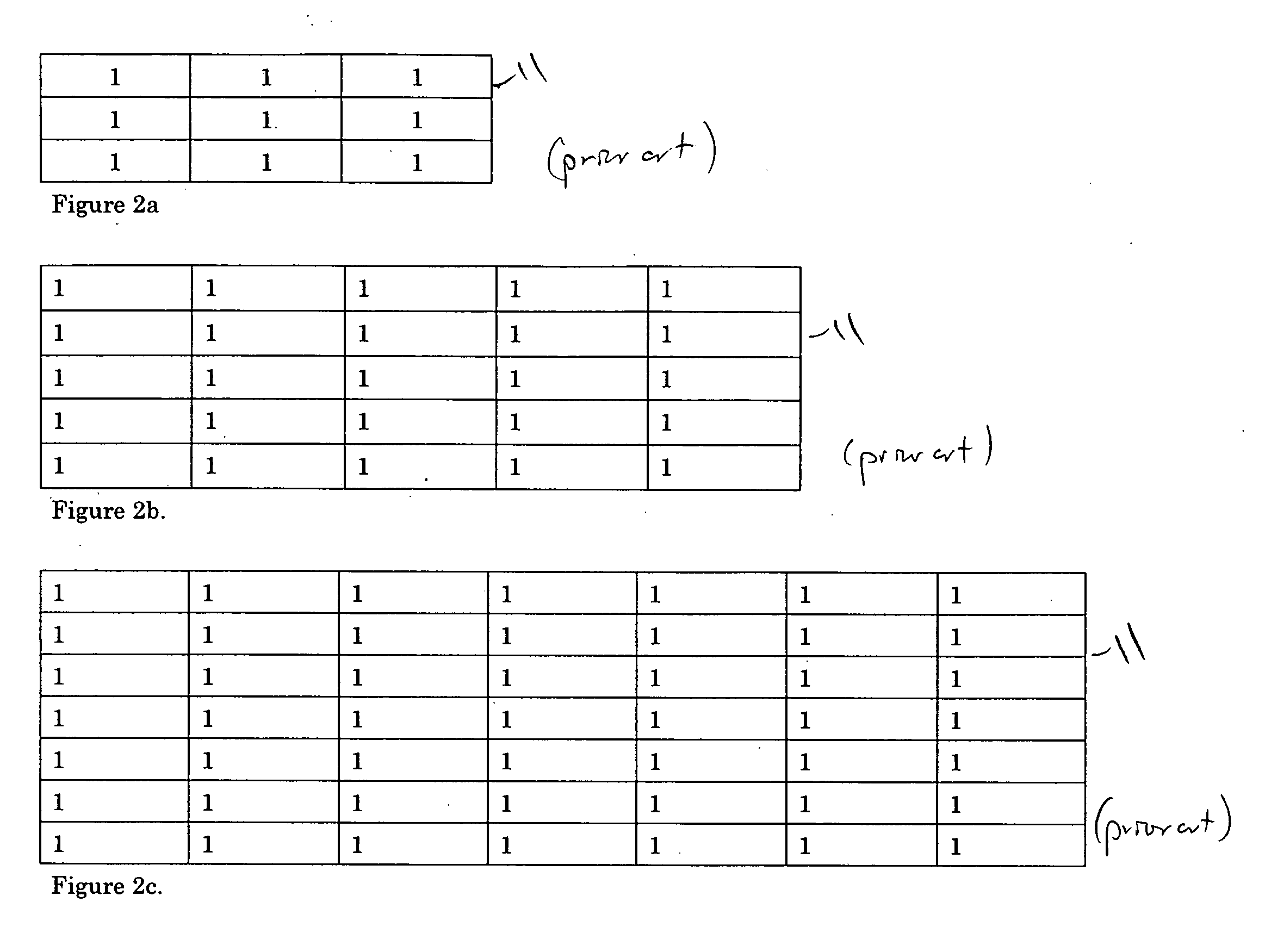Method and apparatus of image processing
a technology of image processing and image, applied in image data processing, image enhancement, instruments, etc., can solve the problems of poor signal to noise ratio, difficult to detect edges in images with noise, fuzzy edges as well as spatial errors with respect to the true edges of original images, etc., to reduce noise in medical imaging, enhance edges, and enhance edges
- Summary
- Abstract
- Description
- Claims
- Application Information
AI Technical Summary
Benefits of technology
Problems solved by technology
Method used
Image
Examples
Embodiment Construction
)
[0039] Edges of an object or organ have directions. Therefore, edge detection needs to be performed in directions. With reference to FIG. 5a-5h, there is illustrated edge detection filters in 8 directions (−45°, 45°, 67.5°, 22.5°, −67.5°, −22.5°, 0°, 90°, respectively) of the present invention. Each filter is implemented so as to produce the effect of low-pass filtering as the size of each filter is large and is capable of detecting edges reliably with a better signal to noise ratio than that of the prior art. Yet, unlike the edge detection filter after low-pass filtering of the prior art, the present invention applies the operation of differentiation to image pixels which are not overriding each other. To illustrate this problem of the preprocessing of a low-pass filter, a 1×3 edge detection filter 31 of the horizontal direction, which is a part (or column) of the filter 11 in FIG. 1a, is shown in FIG. 3a. Using three columns of the filter 11 yields an effect of averaging and a hi...
PUM
 Login to View More
Login to View More Abstract
Description
Claims
Application Information
 Login to View More
Login to View More - R&D
- Intellectual Property
- Life Sciences
- Materials
- Tech Scout
- Unparalleled Data Quality
- Higher Quality Content
- 60% Fewer Hallucinations
Browse by: Latest US Patents, China's latest patents, Technical Efficacy Thesaurus, Application Domain, Technology Topic, Popular Technical Reports.
© 2025 PatSnap. All rights reserved.Legal|Privacy policy|Modern Slavery Act Transparency Statement|Sitemap|About US| Contact US: help@patsnap.com



